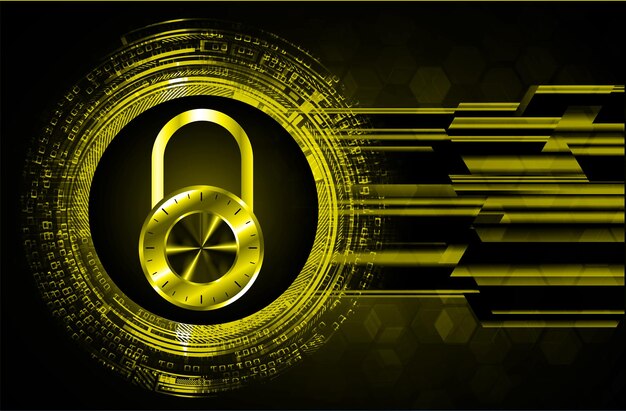Streaming security: How to protect your accounts from hackers in the US

Advertisements
Streaming security isn’t just about protecting movies, it’s about safeguarding your digital life. If you’re in the US and love kicking back with your favorite shows, it’s time to think beyond entertainment and focus on security.
Cybercriminals are eyeing your streaming accounts more than ever. Stolen credentials, hacked profiles, and unauthorized usage are growing fast. And with our lives increasingly online, one compromised account can spiral into bigger issues.
Whether you’re on Netflix, Hulu, or Disney+, protecting your access is essential. Let’s explore how to keep your viewing experience safe, private, and uninterrupted.
Anúncios
Understanding the risks to your streaming accounts
Streaming security starts with awareness. Knowing what you’re up against is the first step to protecting your digital presence. As streaming platforms grow, so does their appeal to cyber attackers.
Criminals exploit weak points like reused passwords or outdated apps. Their goal? Access your subscriptions, or worse, your personal data. Ignoring these risks leaves your account wide open.
From phishing to malware, threats are everywhere. But once you understand how they work, you can stay a step ahead and keep your binge sessions worry-free.
Anúncios
Common threats
Streaming security is constantly challenged by evolving cyberattacks. Hackers rely on techniques like phishing, brute force, and session hijacking to steal access.
These attacks aren’t random. They’re often targeted, using information from past data leaks or weak passwords. Once they’re in, your content and personal details are vulnerable.
Staying informed about how these threats operate helps you recognize red flags early and respond before any damage is done.
Phishing attacks
Streaming security is frequently compromised through phishing schemes. These emails or messages mimic real platforms to steal your login credentials.
Scammers use urgency or fake offers to lure you in. If you click without thinking, you might give away everything. Always double-check the sender’s details and URLs.
Being cautious with email links and knowing how to spot deception can save you from falling victim to these digital traps.
Credential stuffing
Credential stuffing is one of the most overlooked dangers to streaming security. Hackers use leaked credentials from other breaches to access your streaming profiles.
If you reuse passwords, you’re an easy target. Even a minor breach elsewhere could jeopardize your streaming subscriptions. That’s why password hygiene is vital.
Preventing this attack comes down to creating strong, unique logins, and changing them regularly to stay ahead of potential threats.
Strengthening your password security
At the heart of strong streaming security is a powerful password strategy. Weak or reused passwords are like open doors to your entertainment accounts.
Hackers have tools to guess predictable passwords in seconds. Your best defense is unpredictability, make your credentials tough to crack.
By upgrading your password practices, you make it significantly harder for cybercriminals to breach your streaming world.
Creating strong passwords
Streaming security depends on clever password choices. Avoid names, dates, or common sequences, those are hacker goldmines.
Instead, mix random words, symbols, and cases. Think of your password as a digital fortress, unique, long, and tough to guess.
You don’t have to memorize them all, use secure methods to manage complex credentials without losing control.
Password length and complexity
For solid streaming security, longer really is better. A 12-character password with a mix of elements drastically reduces the chance of being cracked.
Simple tweaks like swapping letters for symbols or using entire phrases can boost protection. Avoid patterns, hackers love predictability.
Remember: length + variety = resilience. Shortcuts here could cost you your entire streaming lineup.
Password managers
Consider using a password manager to securely store and manage your passwords. These tools can generate strong, unique passwords for each of your accounts and store them in an encrypted vault.
- LastPass
- 1Password
- Dashlane
By implementing these strategies, you can significantly enhance the security of your streaming accounts and reduce the risk of unauthorized access.

Enabling two-factor authentication (2FA)
Streaming security gets a major upgrade with two-factor authentication (2FA). It adds a second verification step, making your accounts far more secure.
Even if a hacker gets your password, they’d still need your second factor, like a code from your phone. That’s a powerful barrier.
Activating 2FA is fast and easy. It’s one of the best defenses you can set up right now for your favorite platforms.
How 2FA works
2FA works by combining something you know (your password) with something you have (a temporary code). This layered protection stops most break-in attempts cold.
Whether via SMS, email, or an app, you’ll confirm your identity twice. That second check cuts the risk of unauthorized access.
For streaming security, 2FA turns your login into a locked vault that’s much harder to crack.
Authenticator apps
Authenticator apps like Google Authenticator or Authy provide stronger protection than SMS codes. They generate secure, time-based passcodes on your device.
Unlike text messages, these apps can’t be intercepted easily, making them a safer bet for guarding your streaming logins.
Using one gives you more control and a higher level of account integrity across every platform you use.
Setting up 2FA on streaming platforms
Most major streaming services offer 2FA. To enable it, navigate to your account settings and look for the “Security” or “Two-Factor Authentication” option.
- Netflix: Account > Security > Two-factor authentication
- Hulu: Account > Privacy and Settings > Two-Step Verification
- Disney+: Account > Security > Two-Factor Authentication
Enabling 2FA is a simple yet highly effective way to protect your streaming accounts from unauthorized access. Take the time to set it up on all your important accounts.
Recognizing and avoiding phishing scams
Streaming security is often breached when users fall for phishing. These scams look legitimate, but they’re designed to steal your credentials or data.
A sudden “account problem” email or a fake prize link is usually a trap. Clicking recklessly can expose your login, and your identity.
Learn how to spot and ignore these traps to protect both your subscription and your sensitive information.
Identifying phishing emails
Phishing emails can be sneaky. Look for bad grammar, strange senders, or links that don’t match the platform’s official domain.
Even if it looks convincing, think before you click. Hover over links to preview the URL. If anything feels off, it probably is.
Staying alert can help you dodge these cyber pitfalls with confidence.
Verifying sender authenticity
Before taking action on an email, verify who it came from. Real streaming platforms won’t ask for sensitive info via email.
Check the full address, not just the name. A minor variation or odd domain is a telltale sign of a fake.
When in doubt, go directly to the platform’s official website instead of clicking embedded links.
Reporting phishing attempts
Streaming platforms want to know when scammers impersonate them. Reporting phishing emails helps protect you, and others, from harm.
Forward suspicious messages to the platform’s fraud team. Also, alert your email provider to flag it as dangerous.
Acting quickly limits the reach of the scam and helps keep the streaming community safer.
Monitoring your account activity
Streaming security doesn’t end after login. Keeping tabs on account activity helps you catch unauthorized access before real damage occurs.
Most services now show where, when, and how your account was accessed. Reviewing that log is a smart habit.
Unfamiliar logins, sudden changes, or odd watch patterns? That’s your cue to act fast and lock things down.
Checking login history
Your streaming service’s login history can reveal red flags, like unfamiliar devices or strange locations.
Make it a habit to check this section every few weeks. If something looks off, sign out of all devices and change your password.
Early detection is your best shot at stopping account hijacking before it spreads.
Identifying suspicious activity
Strange titles in your watch history or changes to your settings might mean someone else is inside your account.
Keep an eye out for payment updates, profile renaming, or devices you don’t recognize. These could be signs of a breach.
If you notice any of these, act fast: log out of all sessions, update your password, and enable 2FA.
Alerts and notifications
Many platforms now offer alerts for unusual activity. Enable them to get notified instantly if anything seems off.
These notifications can be the difference between catching a hack early, or after it’s too late.
Set up real-time updates via email or app to monitor your streaming safety on the go.
Keeping your devices secure
Your device is the gateway to your streaming account, so keeping it protected is critical for streaming security.
From smart TVs to smartphones, every gadget should be treated as a potential vulnerability. Don’t leave the door open.
By keeping your tech healthy and secure, you ensure your content stays private and uninterrupted.
Updating software
Security patches fix known weaknesses. When you delay updates, you give hackers a chance to exploit them.
Make regular updates a habit for your streaming apps, browsers, and operating system. It’s a small step with major impact.
Timely updates mean fewer risks and better protection every time you log in.
Using antivirus software
Strong antivirus tools defend your devices from malware, spyware, and ransomware, common threats to streaming safety.
Choose software with real-time scanning and automatic updates. A protected device is much harder to compromise.
Don’t forget mobile protection, smartphones need security too, especially if you stream from your phone.
Avoiding public wi-fi
Public Wi-Fi is convenient but risky. Hackers can intercept your data over unsecured networks, including your streaming credentials.
If you must connect, use a reliable VPN to encrypt your traffic. This makes your data unreadable to anyone snooping.
Streaming securely means choosing safe connections, even when you’re on the go.
| Key Point | Brief Description |
|---|---|
| 🔑 Strong Passwords | Use unique, complex passwords for each streaming service. |
| 📱 Two-Factor Authentication | Enable 2FA to add an extra security layer. |
| 🎣 Avoid Phishing | Be cautious of suspicious emails and links requesting personal info. |
| 🛡️ Secure Devices | Keep devices updated and use antivirus software. |
FAQ – Streaming Service Security
▼
Streaming service security is important because it protects your personal and financial information from being compromised by hackers. It ensures your viewing experience remains private and uninterrupted.
▼
Create a strong password by using a mix of upper and lower case letters, numbers, and symbols. Avoid using personal information like your birthday or name. Aim for at least 12 characters.
▼
Two-factor authentication (2FA) adds an extra layer of security by requiring a second verification method, like a code from your phone, in addition to your password. This makes it harder for hackers to access your account.
▼
Recognize phishing attempts by looking for suspicious emails with typos, grammatical errors, or urgent requests for personal information. Always verify the sender’s authenticity before clicking on any links.
▼
If you suspect your account has been hacked, immediately change your password, enable two-factor authentication, and review your account activity for any unauthorized changes. Contact the streaming service’s support if necessary.
Protecting your streaming accounts requires a proactive approach, but the peace of mind knowing your personal information and subscriptions are secure is well worth the effort.
By implementing the strategies discussed, you can enjoy your favorite content with confidence, knowing you’ve taken essential steps to safeguard your streaming service security: protecting your account from hackers in the US.





